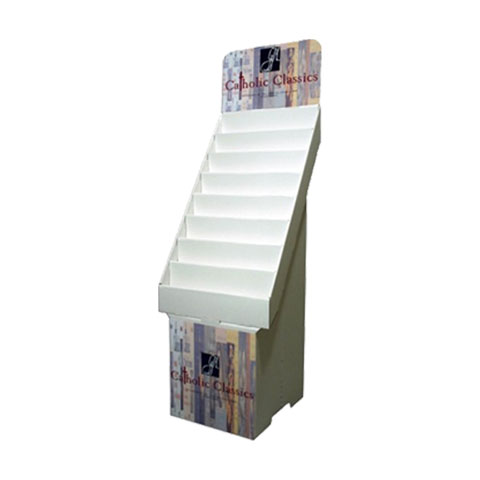8 Lessons Learned from Iconic Cardboard Display Campaigns
Cardboard displays have been at the forefront of some of the most successful marketing campaigns in retail history. These iconic campaigns demonstrate how thoughtful design and strategic execution can turn a simple cardboard display into a powerful tool for driving engagement and sales. Here are eight lessons marketers can learn from standout cardboard display campaigns.
1. Design for Instant Recognition
Iconic campaigns leverage displays that are instantly recognizable. Whether it’s Coca-Cola’s festive holiday displays or Kinder’s playful setups, the branding is unmistakable.
Lesson: Incorporate strong brand elements—colors, logos, and taglines—to create a display that’s visually tied to your product at first glance.
2. Align with Consumer Emotions
Displays that tap into emotions resonate deeply with shoppers. For example, Oreo’s playful and nostalgic displays evoke warm feelings that connect with all ages.
Lesson: Design displays that reflect your brand’s emotional appeal, whether it’s joy, nostalgia, or excitement.
3. Capitalize on Seasonal Trends
Brands like Cadbury and Starbucks have mastered seasonal campaigns with displays tailored to holidays and special occasions. These displays not only stand out but also feel timely and relevant.
Lesson: Plan ahead for key seasons and events, designing displays that align with the mood and themes of the time.
4. Use Bold, Eye-Catching Designs
Big, bold, and colorful designs draw attention from across the store. Nike’s athletic-inspired displays, for instance, often use dynamic shapes and vibrant hues to reflect energy and movement.
Lesson: Don’t be afraid to think outside the box—literally. Unique shapes and bold visuals can make your display the focal point of a retail space.
5. Tell a Story
Some of the best displays go beyond showcasing products—they tell a story. LEGO’s displays often incorporate mini-scenes that draw customers in and make them part of the brand’s world.
Lesson: Use your display as a canvas to tell your brand’s story or showcase your product’s journey.
6. Encourage Interaction
Interactive displays invite shoppers to engage, increasing dwell time and purchase likelihood. Pepsi’s interactive soda dispensers and beauty brands’ “try me” stations are great examples.
Lesson: Add touchpoints like QR codes, motion-activated features, or sample areas to make your display more engaging.
7. Leverage Space Effectively
IKEA’s flat-pack cardboard displays are a masterclass in maximizing space without compromising impact. They are efficient yet visually appealing, fitting seamlessly into retail environments.
Lesson: Focus on creating displays that balance size, functionality, and visual appeal to suit various retail spaces.
8. Prioritize Sustainability
Sustainability is a growing concern for shoppers. Brands like Lush use recyclable, eco-friendly materials in their displays, reinforcing their commitment to the environment.
Lesson: Highlight your eco-friendly efforts by using sustainable materials and including messaging that resonates with environmentally conscious consumers.
Final Thoughts
The success of iconic cardboard display campaigns boils down to creativity, relevance, and strategic execution. By drawing inspiration from these lessons, you can craft displays that captivate shoppers and leave a lasting impression.
Looking for inspiration for your next display campaign? Packwins specializes in custom cardboard displays designed to elevate your brand and boost sales. Let’s bring your ideas to life!


